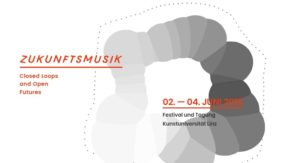 Vortrag Eva Kernbauer: „Geschichtsbilder. Historiographische Methoden in der Gegenwartskunst“
Vortrag Eva Kernbauer: „Geschichtsbilder. Historiographische Methoden in der Gegenwartskunst“
8. Juni 2016
Friedrich Schiller-Universität Jena
www.europaeisches-kolleg.uni-jena.de
 Vortrag Eva Kernbauer: „Geschichtsbilder. Historiographische Methoden in der Gegenwartskunst“
Vortrag Eva Kernbauer: „Geschichtsbilder. Historiographische Methoden in der Gegenwartskunst“
8. Juni 2016
Friedrich Schiller-Universität Jena
www.europaeisches-kolleg.uni-jena.de
 Vortrag Kristina Pia Hofer: „40 Jahre No Future: Punk, Repertoire und Retromanie“
Vortrag Kristina Pia Hofer: „40 Jahre No Future: Punk, Repertoire und Retromanie“
2.-4. Juni 2016
Kunstuniversität Linz
 Vortrag Eva Kernbauer: „Historiographische Reflexionen und die endlose Gegenwart der Gegenwartskunst“
Vortrag Eva Kernbauer: „Historiographische Reflexionen und die endlose Gegenwart der Gegenwartskunst“
7.–9. April 2016
Friedrich Schiller-Universität Jena
 Marietta Kesting „Photographic Portraits of Migrants: Framed between Identity Photographs and (Self-)Presentation“, in: Kyle Thomas, Louise Green (eds.), Photography in and out of Africa. Iterations with a Difference, Routledge 2016, 471-494.
Marietta Kesting „Photographic Portraits of Migrants: Framed between Identity Photographs and (Self-)Presentation“, in: Kyle Thomas, Louise Green (eds.), Photography in and out of Africa. Iterations with a Difference, Routledge 2016, 471-494.
https://doi.org/10.1080/02533952.2014.989678
This book offers a range of perspectives on photography in Africa, bringing research on South African photography into conversation with work from several other places on the continent, including Angola, the DRC, Kenya, Mali, Morocco, Nigeria, Ethiopia, and Eritrea. The collection engages with the history of photography and its role in colonial regulatory regimes; with social documentary photography and practices of self-representation; and with the place of portraits in the production of subjectivities, as well as contemporary and experimental photographic practices. Through detailed analyses of particular photographs and photographic archives, the chapters in this book trace how photographs have been used both to affirm colonial worldviews and to disrupt and critique such forms of power. This book was originally published as a special issue of Social Dynamics.
![]() Marietta Kesting, Photographic Portraits of Migrants: Framed between Identity Photographs and (Self-)Presentation
Marietta Kesting, Photographic Portraits of Migrants: Framed between Identity Photographs and (Self-)Presentation
 Gastvorlesung Kristina Pia Hofer zum Thema „Materialität und Theorien filmischer Repräsentation“
Gastvorlesung Kristina Pia Hofer zum Thema „Materialität und Theorien filmischer Repräsentation“
Campus Hagenberg – Fachhochschule Oberösterreich

Vortrag Kristina Pia Hofer: „Filmische Repräsentation als agentieller Schnitt: Exzess, Bedeutung und Materialität im Exploitationkino”
12.-13. Februar 2016
Humboldt-Universität Berlin
Marietta Kesting, „Erase our genetic fingerprints?“
5. – 6.2.2016
Hochschule für bildende Künste Hamburg
Ort: HFBK Hamburg, Lerchenfeld 2, Aula
Symposium im Rahmen des Graduiertenkollegs »Ästhetiken des Virtuellen«
Marietta Kesting, Visionary Archive Rezension, “It all depends # 3”, Arsenal Berlin, kuratiert von Marie-Hélène Gutberlet und Tobias Hering.

 Internationalen Konferenz „Picturing the body in the Laboratory“:
Internationalen Konferenz „Picturing the body in the Laboratory“:
Marietta Kesting – Creating Photographic Identification
05. November 2015 – 12:20
Humboldt-Universität Berlin
Seminar Room 2093, Unter den Linden 6